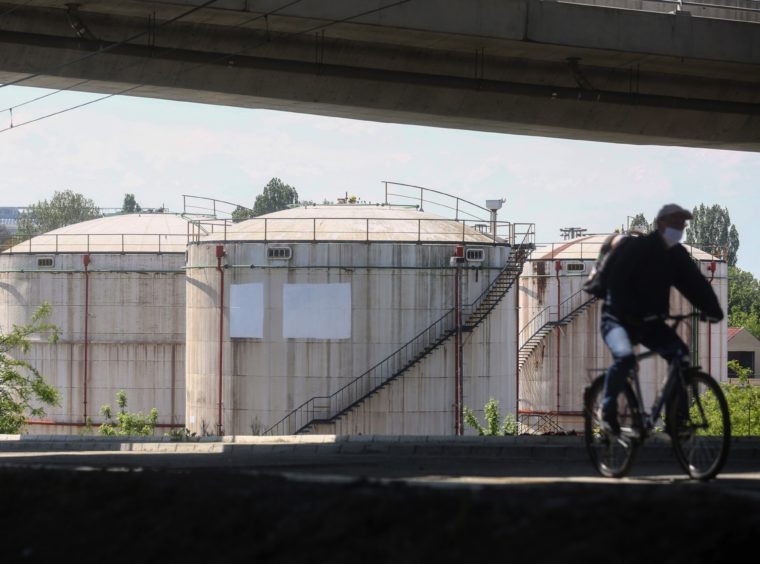
Oil climbed after losing more than a quarter of its value over the past two days with volatility likely to continue on concern prices may drop below zero again as investors and a major fund exit the June contract.
Futures added 14% in New York after dropping Tuesday as S&P Global Inc. told clients to immediately sell their stakes in West Texas Intermediate for June delivery into July crude. That followed a move by the biggest oil exchange-traded fund to exit near-term contracts as swelling stockpiles force investors to confront the possibility that there won’t be any space for physical barrels.
The American Petroleum Institute reported U.S. crude inventories at Cushing, Oklahoma, the delivery point for WTI, rose by 2.49 million barrels last week, according to people familiar with the data. UBS Group AG predicts the key storage hub may reach its capacity limit next month.
Storage capacity is being tested as a worldwide glut of fuels and crude expands due to the destruction in demand by the coronavirus. While the world’s biggest producers have agreed to cut daily output by almost 10 million barrels starting next month to try and balance the market, that’s unlikely to be enough to cope with the consumption hit from virus lockdowns.
“While there’s some short-covering, prices are unlikely to see a major rebound from here unless stockpiles show signs of shrinking or a cure is found for the coronavirus,” Will Sungchil Yun, a senior commodities analyst at VI Investment Corp., said by phone from Seoul.
S&P is behind the GSCI commodity index, a popular investment product tracked by pension funds and other global investors. When S&P changes the investment policy, the banks who sell the product in turn move their holdings, triggering volatile energy markets. WTI June futures slumped more than 21% to near $10 a barrel on Tuesday before paring most of their losses.
The cumulative effect of all the funds reshuffling their position is that about 46% of the June contract’s open interest has evaporated in the past six trading sessions. There were 318,000 open positions as of Tuesday, with 15 sessions left before expiration. May WTI had 610,000 at the same point before expiry.
The spread between June WTI and July oil narrowed to $4.35 a barrel, while the gap with crude for December delivery was about $14.
The API reported Tuesday that nationwide U.S. crude stockpiles rose by 9.98 million barrels last week, which would be a 14th weekly increase if confirmed by Energy Information data on Wednesday. Analysts surveyed by Bloomberg forecast inventories will gain almost 12 million barrels.
Russia warned that there will be no quick fix to low prices. The nation’s energy minister, Alexander Novak, said Tuesday that the oil market may only start to rebalance in the second half of the year. OPEC supply has climbed to more than 31 million barrels a day this month, the highest since December 2018, according to Geneva-based tanker tacker Petro-Logistics.
Recommended for you
